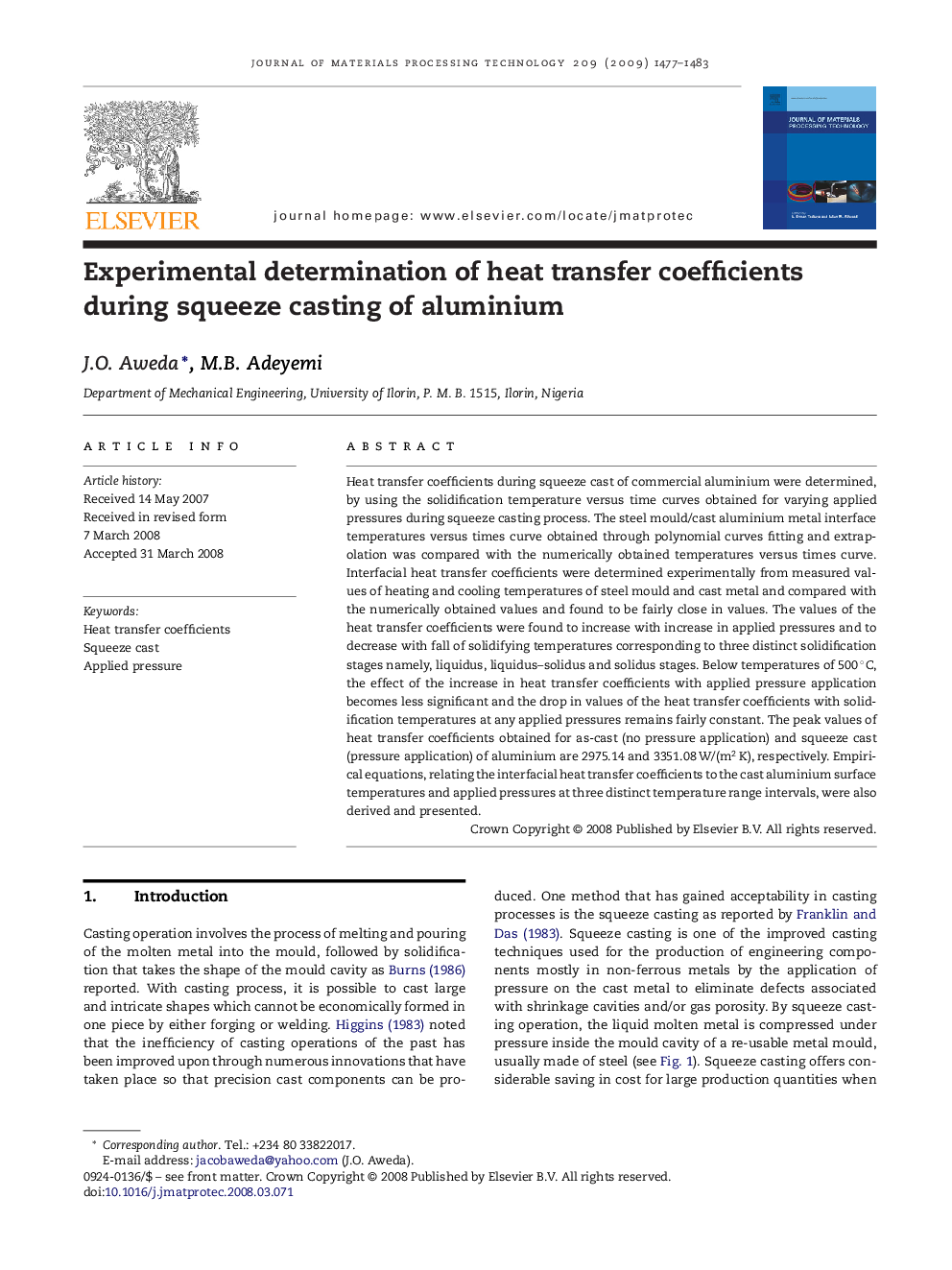| Article ID | Journal | Published Year | Pages | File Type |
|---|---|---|---|---|
| 791527 | Journal of Materials Processing Technology | 2009 | 7 Pages |
Heat transfer coefficients during squeeze cast of commercial aluminium were determined, by using the solidification temperature versus time curves obtained for varying applied pressures during squeeze casting process. The steel mould/cast aluminium metal interface temperatures versus times curve obtained through polynomial curves fitting and extrapolation was compared with the numerically obtained temperatures versus times curve. Interfacial heat transfer coefficients were determined experimentally from measured values of heating and cooling temperatures of steel mould and cast metal and compared with the numerically obtained values and found to be fairly close in values. The values of the heat transfer coefficients were found to increase with increase in applied pressures and to decrease with fall of solidifying temperatures corresponding to three distinct solidification stages namely, liquidus, liquidus–solidus and solidus stages. Below temperatures of 500 °C, the effect of the increase in heat transfer coefficients with applied pressure application becomes less significant and the drop in values of the heat transfer coefficients with solidification temperatures at any applied pressures remains fairly constant. The peak values of heat transfer coefficients obtained for as-cast (no pressure application) and squeeze cast (pressure application) of aluminium are 2975.14 and 3351.08 W/(m2 K), respectively. Empirical equations, relating the interfacial heat transfer coefficients to the cast aluminium surface temperatures and applied pressures at three distinct temperature range intervals, were also derived and presented.
